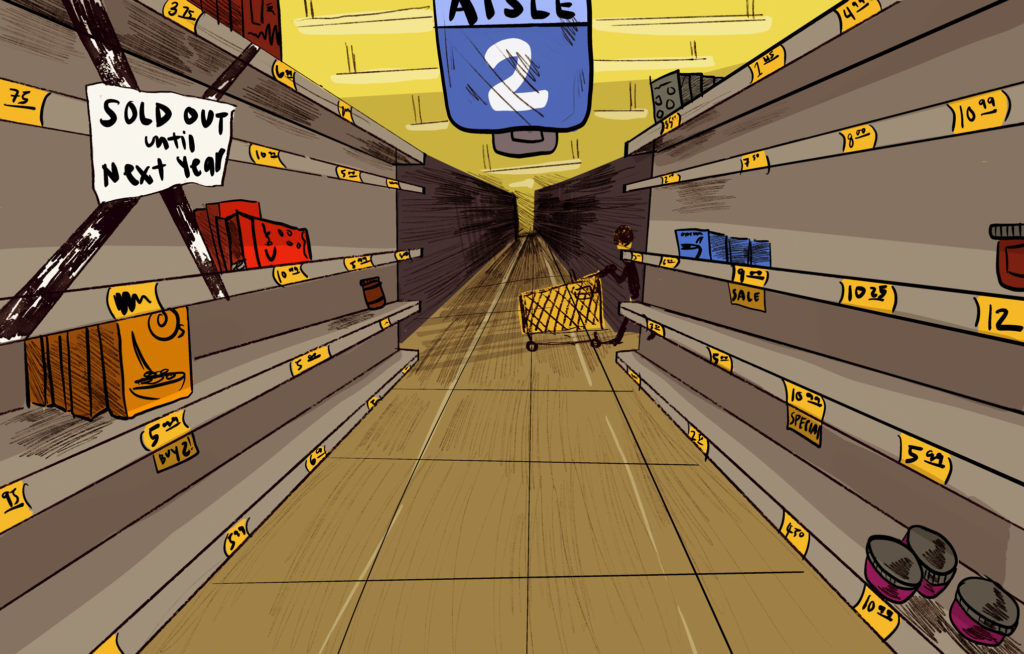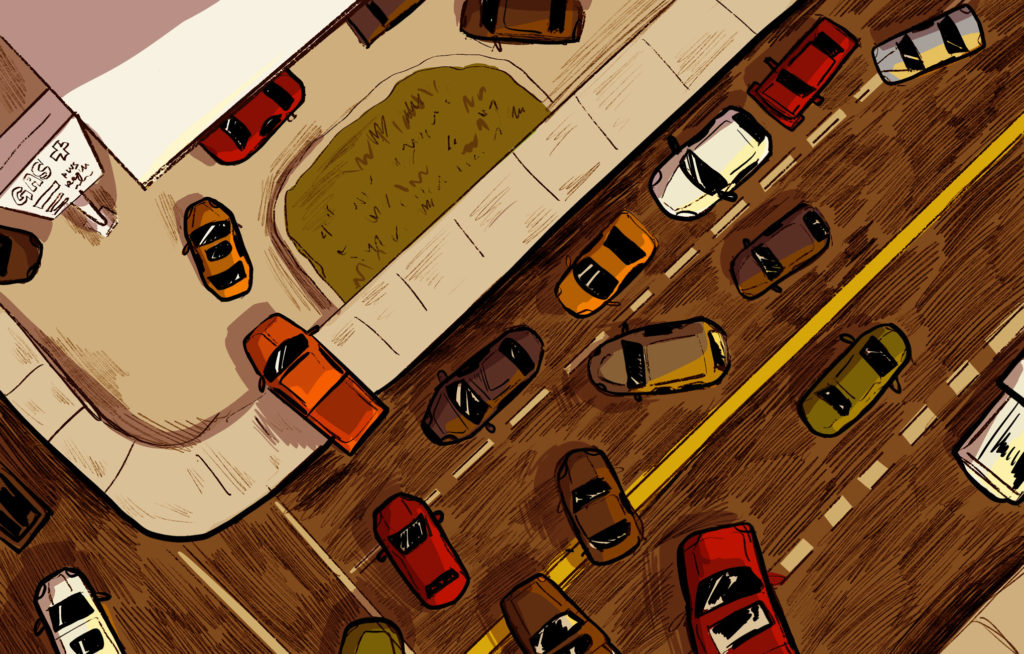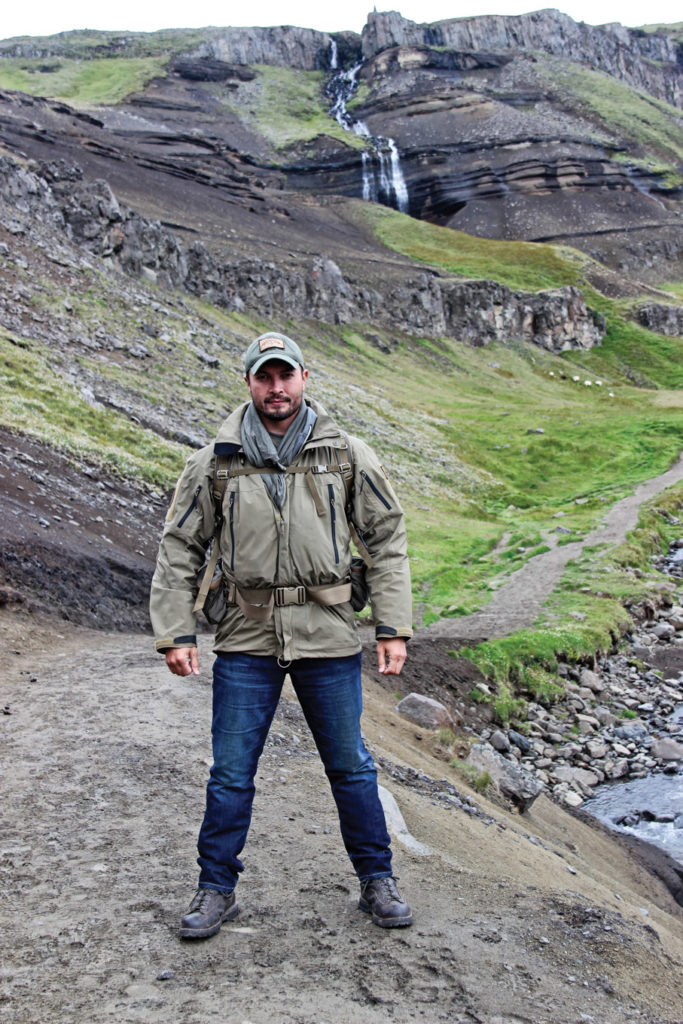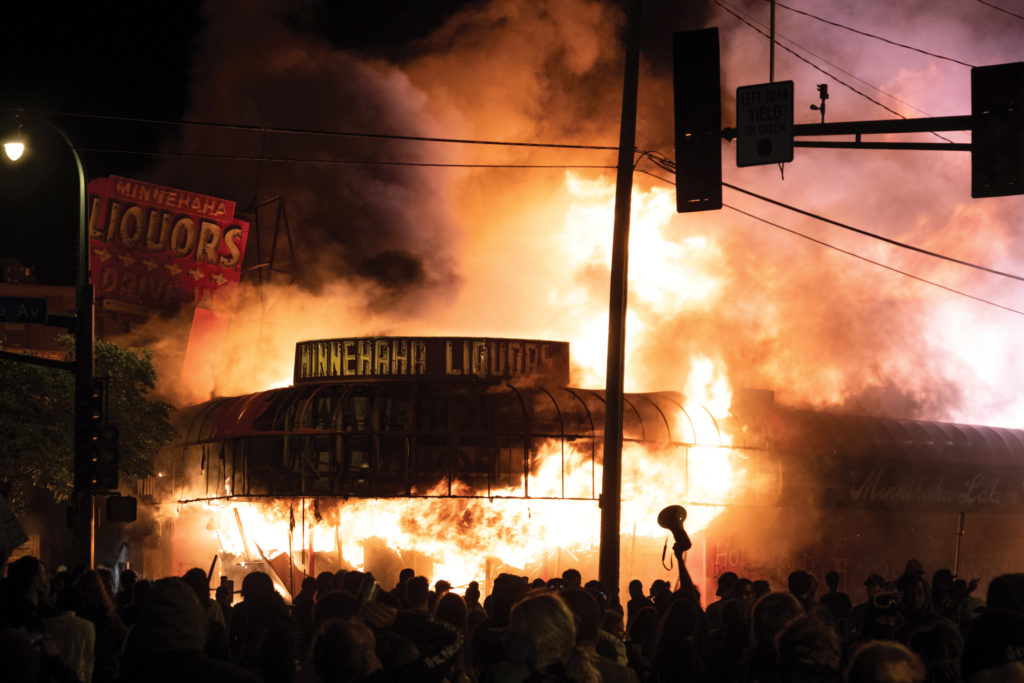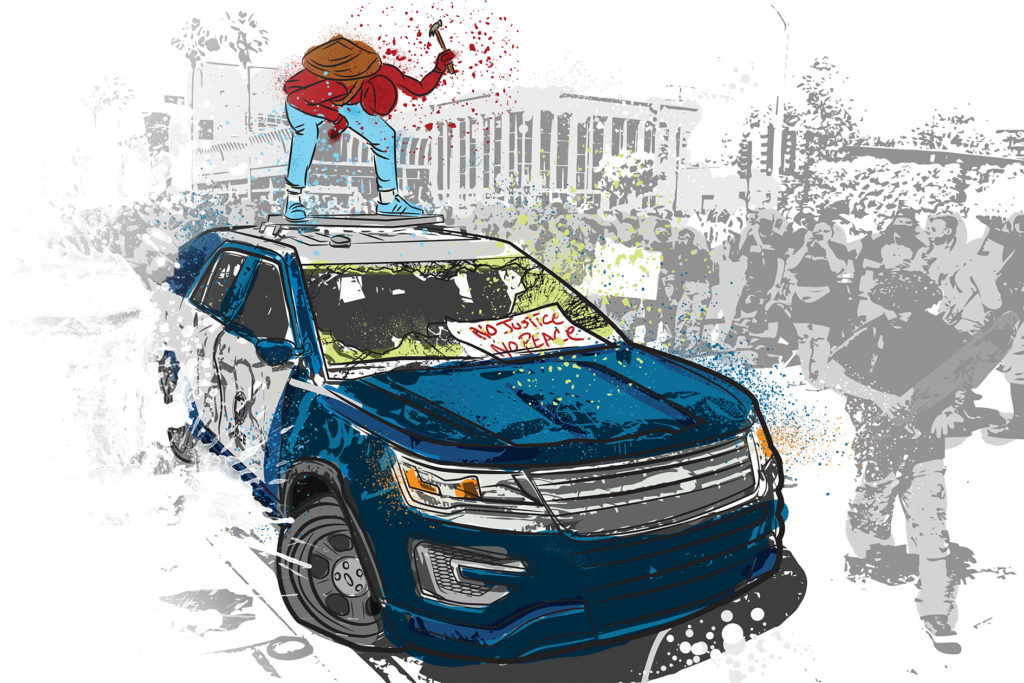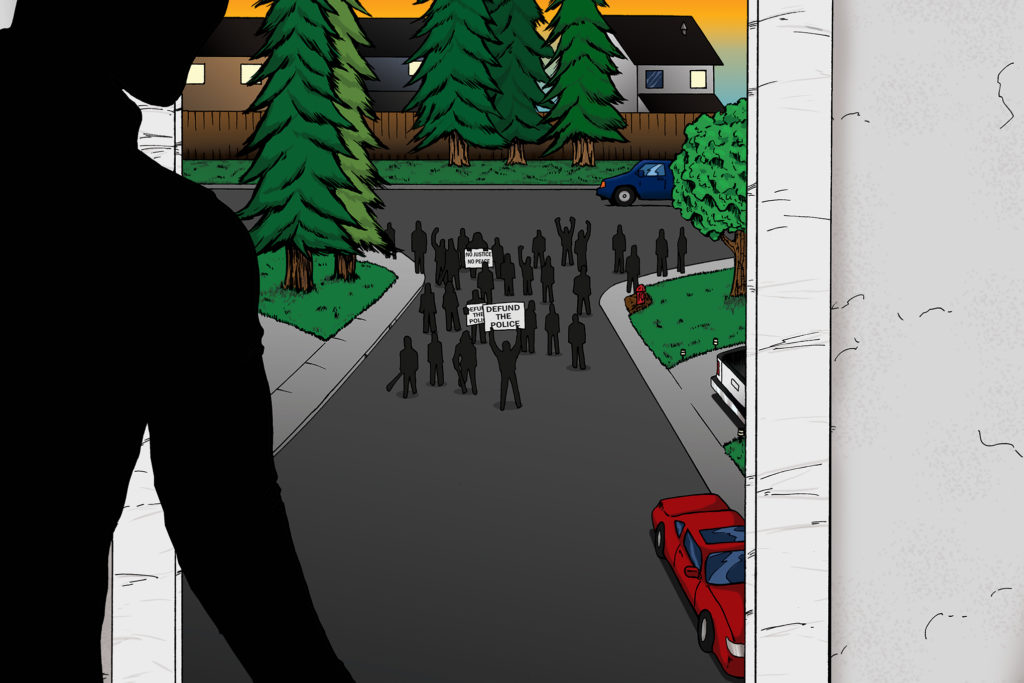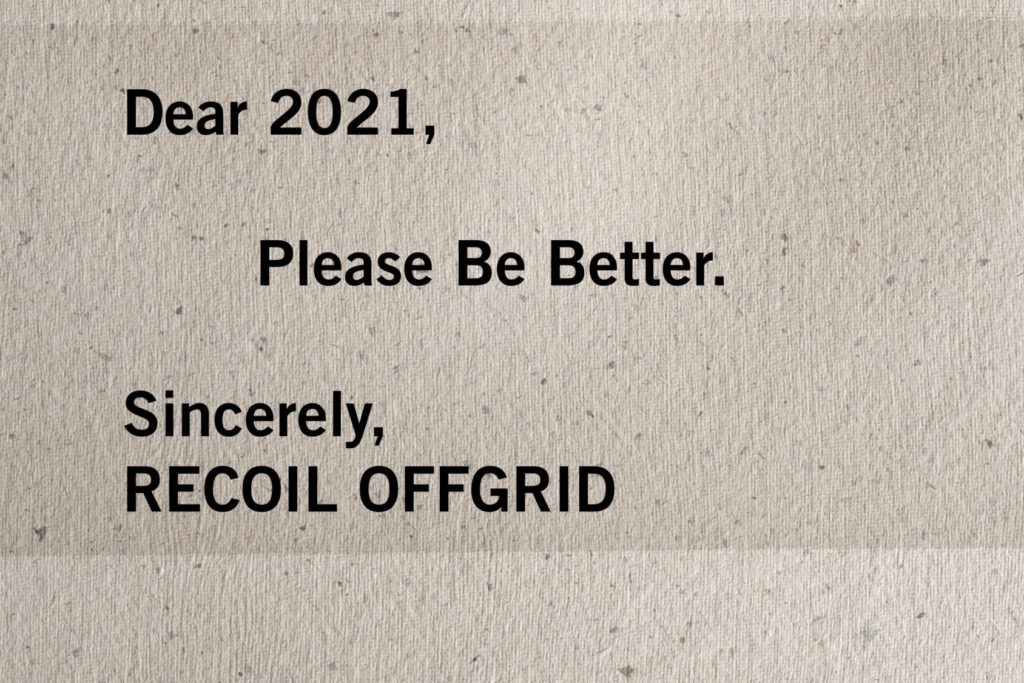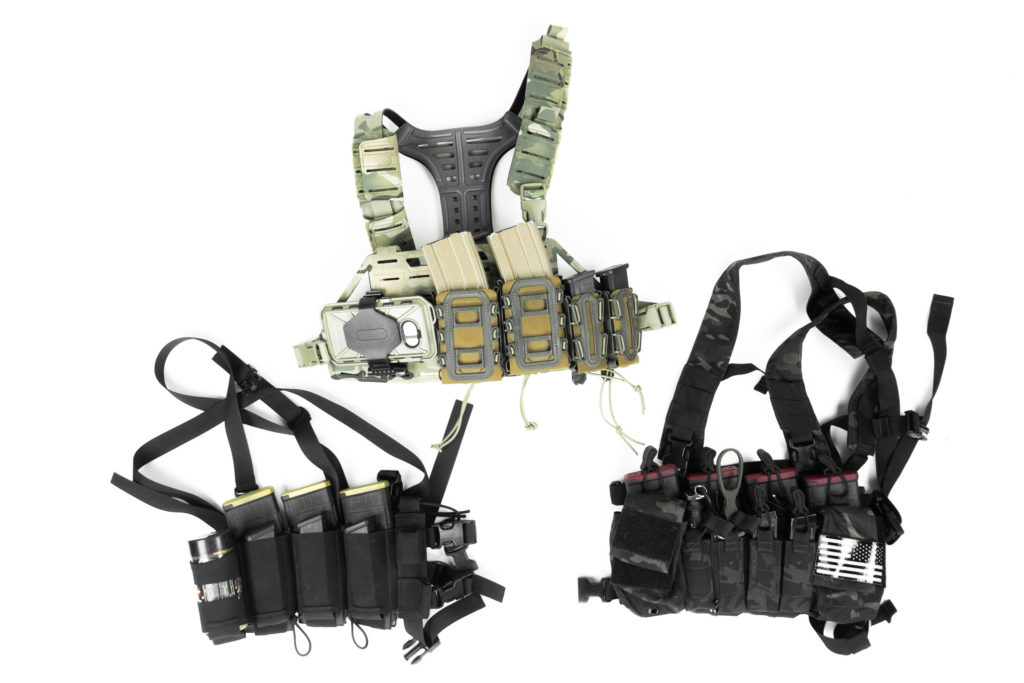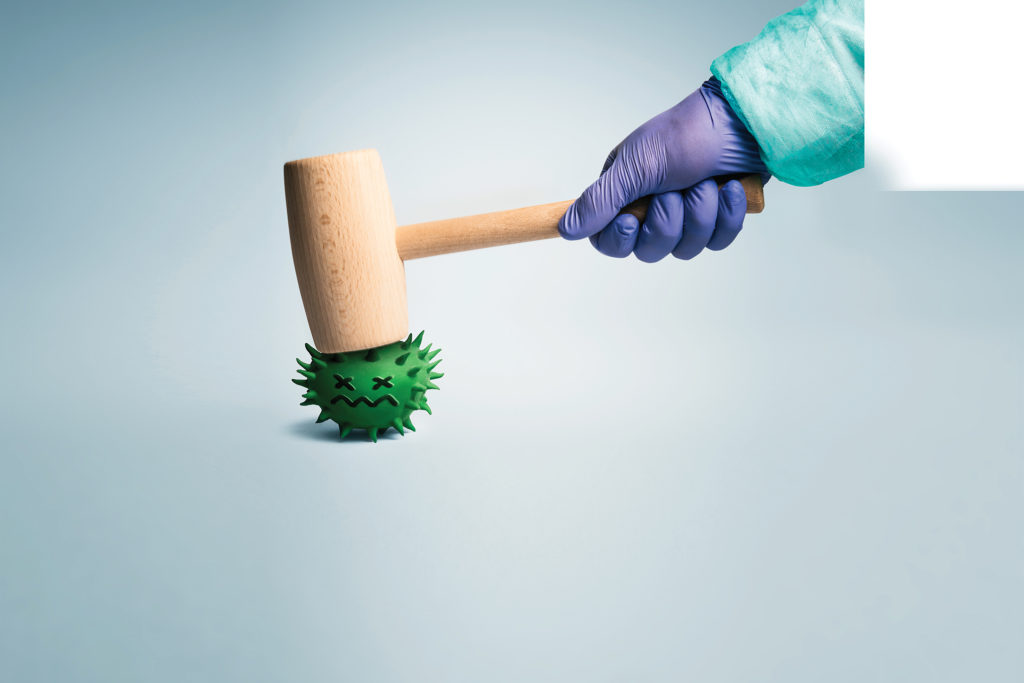It’s impossible to predict the flashpoint that could reduce a city to chaos in a matter of hours. One thing is for sure: There will always be some among us who are looking for an excuse to see the world burn. We’ve watched certain U.S. cities silently condone violent civil unrest in 2020, blithely lumping it into the same category as peaceful protests. What will that flagrant disregard for safety and stability culminate in this year? Rather than throw caution to the wind and assume “everything will be alright,” we decided to look into a situation that could potentially have a devastating impact on commerce. What if your hometown was so consumed with rioting that the services and supplies you take for granted suddenly became unavailable?
The Scenario:
The Setup: You live in a major city that has been under siege with nonstop civil unrest. The weeks of ongoing riots have not only forced many city centers and local businesses to close but have also interrupted commerce for the average citizen. Everything from supermarkets to hardware stores have stopped receiving deliveries. Roadblocks, because of protests as well as trucks being looted, have not only made it difficult to conduct business, but some companies are flat-out refusing to send their drivers into areas where their lives are in danger. Curfews and limited public movement have only exacerbated your inability to replenish supplies you used to take for granted. Store shelves are empty, fighting over what’s available is a regular occurrence, and you have no clue when things will subside enough for life to resume as normal.
Situation Type: Long Term Supply Shortage
Your Crew: You, your Spouse, and your Children
Location: Calumet Heights, IL
Season: Summer
Weather: Hot: High 90 degrees F, Low 70 degrees F.
The Complication: Since you’re not able to just pick up and leave your home that easily, and the suburbs have experienced a run on their supplies, you’re forced to improvise with what you have and stretch supplies as far as you can to make them last. Of course, traveling through areas that are fraught with unrest comes with its own risks, not to mention the fact that there are long lines at gas stations due to a diminishing fuel supply. It’s summertime, and the heat only makes a bad situation worse — the scarcity and chaos are weighing heavily on the mental state of an already agitated local population.
Although mail has continued to be delivered, you fear that the USPS may be the next link in the chain to break. Services like UPS, DHL, and FedEx have stopped delivering goods in order to protect their staff, making it somewhat difficult to purchase supplies via e-commerce. For this “What If,” we’ve asked survival instructor Kevin Estela and agriculture and natural resources educator Phillip Meeks how they’d adapt their lifestyle to these conditions. Each writer was asked to consider things like food storage/cultivation, making or improvising needed household items, finding alternatives for medication and first-aid supplies, and self-defense resources like ammo without consistent availability of commercial goods and services.
The daily morning news has given me no hope of this current civil unrest stopping. The government has failed the people and has let the lunatics run the asylum. My normal supermarket has been trashed, my favorite local family owned deli and convenience store was burned for allegedly aligning with the politics of the mob’s apparent oppressor, and desperation around the city is at an all-time high. Cellular service is still consistent and access to the internet has given me a chance to collect valuable intelligence from my environment. I’m going to let the looters fight over scraps as I direct my attention elsewhere.
For most people, running out of food is a death sentence. Many of my neighbors have left town for the suburbs, but I’m holding ground. I’ve heard reports of those who left late being met by ad-hoc militia-type groups with skewed politics and maniacal leaders. I’ve seen photos of the evacuees’ trashed cars, but haven’t seen any of the evacuees themselves. We can only speculate. Those who remained have told me they are in the same boat as I am, and we’ve talked about our homes as our castles that we’d be willing to defend. We are trying to stay low-profile, and we’ve even adopted the clothing color scheme of the “protestors” to blend in. If only they could see how much I loathe their reckless actions behind this stupid disguise I’m choosing to wear.
Most of the leftover families have backgrounds in self-reliance much like my own, and many are weekend sportsmen with a modest home armory of at least a .22 rifle, 12-gauge shotgun, and .30-06 bolt gun. In many large cities like this one, politicians have limited our ability to own most pistols and modern sporting rifles. My sister and my nieces have come to my house, so this fight for survival isn’t mine alone. If I only had to worry about myself, I’d suck it up and sacrifice comfort voluntarily. With kids around, this isn’t going to be easy. We have a stocked cupboard, but that food won’t last long. Canned food doesn’t require reconstitution, but the trade-off is weight and space. We’re part Asian, so we were fortunate to have a healthy supply of rice on hand already. I need to think of ways to extend those meals. I need to find fillers out there to get us through this winter.
We stocked up a modest medicine cabinet with more vitamins, dietary supplements, and bandages for boo-boos. Since we don’t plan on moving about much, we’ve moved the bug-out kits from our vehicles to our house. Car windows are just fragile doors that haven’t been smashed open yet, so we don’t want to leave anything of value out on the street.
Appearances vs. Reality
Knowing we’d need to get across town from time to time, I secured the rattiest-looking shopping carts I could find. The “protestors” loot and steal from stores, shops, and wealthy individuals. It’s a gamble, but I doubt being seen as a bum would attract too much attention, especially at hours of the day when most are preprogrammed to sleep and definitely when the cold of winter keeps most “protestors” indoors on their computers and phones.
We all know the actions of this mob don’t constitute lawful protest. I watched it play out time and time again and was quick to stock up on freeze-dried foods at the local Walmart. I also grabbed plenty of canned goods at the supermarket as soon as I suspected something like this was happening in my backyard. I let the idiots fight over toilet paper while I grabbed another large sack of rice, plenty of cooking oil, and tuna packets.
The way I look at it, with just these three ingredients, I have carbs, fat, and protein. I grabbed some spices and seasoning packets before I left, knowing I could provide some variety to my unexpected guests who experience food boredom easily. One last thing I picked up on my way out of the store were oversized clothes for my nieces and sister. I want them to look like they have been without food and unable to fill out their normal clothes. Perhaps that’ll help to keep prying eyes from looking too closely at us in our well-prepared state.
Coordination
It pays to have friends. Thankfully, the bonds built around campfires and in hunting camps are hard to break. Outdoor pursuits like these tend to attract similar mindsets. Before all this nonsense popped off, my hunting buddies and I discussed using our phones as a primary means of communication along with two-way radios as an alternate means of communication. Some of us don’t have our license to transmit over civilian amateur bands, but we’re pretty sure law enforcement has bigger fish to fry than some guys chatting on open lines the mob likely isn’t monitoring. Using past cases of civil unrest, we’re fairly confident phone and internet service won’t be interrupted, as people were tweeting and calling from inside occupied zones in the Pacific Northwest.
Should the local government services or utility providers shut down, they’ll only temper the resolve of the mob to stay on mission. My hunting buddies and I decided to use a simple code along with GPS hunting software (OnX Hunt) on our cell phones to keep track of mob positions that we could share with one another. We could also pool our resources if times really got tough. We decided to pop common critters found in most cities as survival food, and save them with the tools found in most of our kitchens like Kitchen-Aid meat grinders, vacuum packers, and food dehydrators.
As a community, we feel the strongest resource we have is one another. Even though we don’t have a medical doctor in our immediate group, we’ve identified who will be our “doc” with the highest medical training. We’ve used text message chains to inventory our medicine cabinets by sharing the photos of what we have. Who knows, maybe someone has a leftover prescription or remedy someone else may need. Without a regular doctor to visit, this will have to do. The rest of us will work in support roles, and we’ll fall back on print resources like the book Where There Is No Doctor. We know this isn’t perfect, but we can work with what we have and address what we face.
Redefining “Food”
If I’ve learned one thing about eating in the wilderness, it’s that hunger is great sauce. I know what it’s like to fast, but how do you convince kids to eat conservatively? My sister is a good mother, and like most moms, she’ll sacrifice her comfort for her kids. Some of the kids’ picky eating habits will make this scenario more difficult. I’ll have to field dress and butcher out in the field, and return with cuts of meat that resemble what could’ve been bought in the grocery store. Doing this in the field will make me more vulnerable, but the trade-off is having to carry less weight over distance.
Drop cakes and fry bread are easy to make with just basic ingredients. Additional nutritional ingredients can be added and snuck into the girls’ food like a dog mama sticking a pill in some peanut butter for her pooch. We’ve got a meat grinder attachment. I know I can mix random scraps of meat, fat, cheese, and spices to make what should remind the girls of meat snacks.
Discreet Food and Water Collection
Even though I live in a city, I know there’s a major body of water directly east of me, Lake Michigan on the outskirts of Calumet Heights. Should I run out of food or if the water gets shut off, I’ll take my shopping cart, don a disguise — most likely a utility worker outfit with a hard hat, vest, and clipboard — and head there. I won’t chip through the ice with my hatchet until long after dark. The good thing about ice fishing is that I can set multiple homemade tip-ups and bail multiple hooks on a single line. It’s a form of passive fishing that’ll let me seek out resources while the baited hooks do the work. If I resort to active fishing, I’ll be a sitting duck and an easy target.
My friends and I decided we wouldn’t take from other families in the same scenario we’re in. If we ran out of food, we would fall back on taking food from government buildings and, in particular, schools. Schools serve hundreds if not thousands of meals each day. The supplies found in the cafeteria, the athletic trainer’s office, school nurse’s office, and various family and consumer science classrooms would give us plenty to sort through. We know the looters and protestors are more interested in high-value real estate like department stores and political buildings.
We can work efficiently and without disruption by going where the agitators won’t be. The frustrating lack of action by the federal government to harden schools, despite numerous calls for basic physical security measures to protect against school shootings, means easy access for us. We asked officials to block off ground-floor windows and create security corridors to prevent unauthorized access, but since they took no action, we know there’ll be multiple easy entry points.
The Enemy of My Enemy is My Friend
I’ve already mentioned how most residents of Illinois don’t have the firearm resources of less restrictive states. Standing toe-to-toe with the rioters is foolish and strategically irresponsible. While I know my hunting partners are capable marksmen and the value of a single well-placed round can’t be measured, there are better options that draw on strategy than force. From watching the news, we know there are multiple domestic terrorist groups “protesting,” but without any real direction. We know mob mentality is often reactive and driven by emotion, which is how we’ll divide the mob and direct their attention at one another instead of the populace. All it takes to incite a mob is a perceived threat. A few bricks with gang colors or inflammatory notes thrown through some rival windows will send a strong manufactured message. Enough bricks can build a house or break down the perceived structure of an organization when equally disorganized groups turn on one another.
We know this civil unrest can’t last forever. In all the cases in our recent history, the government has eventually stepped in. This isn’t a matter of surviving indefinitely; it’s simply a matter of holding out. While some of society has crumbled around us, the backbone of this nation is still holding strong and working together through a secret network. Compared to a mob looking for attention and likes on their social media hashtags, we value community and cooperation. We’re going to outlast and see this through.
Both peaceful demonstrations and riots increased significantly around the globe from 2011 to 2018, according to data published by the Cross-National Time Series. Last year alone saw some of the most costly civil unrest in U.S. history, with one set of protests extending to 140 U.S. cities and leading to personal and corporate insurance losses in excess of $1 billion, says the Insurance Information Institute.
It seems that unrest capable of impacting local businesses and grinding day-to-day life to a halt is a greater possibility than it’s ever been, especially in cities. And these events won’t necessarily come and go within a few days.
Indoor Preparations
When I was a kid, I learned a lot about preparedness from a space my parents referred to simply as their “utility room.” They’d converted their carport into a new kitchen, leaving the old refrigerator and cabinets behind. Over time, my folks filled this space with razors, shampoo, toothpaste, adhesive bandages, Ibuprofen, salt, and practically any other worthwhile item they caught on sale. In the same way, the old refrigerator got packed with condiments, ground beef, soft drinks, and frozen pizzas. This continuous and long-term larder-loading is what I’ve tried to adapt as an adult. It can be an affordable way to build enough supplies to carry a family through a long-term event … but only if you start now.
You may use a lot of disposable items in your normal, day-to-day life — things like paper plates, paper cups, paper towels, and wet wipes. It’s good to have a few weeks’ worth of these things in stock, but for the long-term, there’ll come a point where it’ll be more sustainable to switch to real dinnerware and towels to be laundered. For an emergency that stretches on for months, plenty of laundry detergent and dish soap are good investments. Some ultralight backpackers forego the need for a lot of toilet paper by using a squeeze bottle as a makeshift bidet. The thought makes some squeamish, but the fact is it’s an acceptable way to keep oneself clean when paper products run out.
Another angle regarding the replacement of disposable with reusable items is this: if trash disposal is disrupted for weeks or months, what will the accumulation of garbage in your home mean to your family’s health and morale?
Buy drinking water in reusable 5-gallon containers to cut down on waste. Hygiene and household cleaning can be accomplished with pool water or a rain barrel. It’s possible the rainwater can be made potable in a pinch, too, depending on the surfaces it touches.
Plan to cook during an extended crisis, and give the entire family a role in the process. (A selection of easy-to-prepare instant meals will be fine for when time and energy run low.) Canned meats, vegetables, and fruits have a long shelf-life, as do pastas, flour, and cornmeal. Powdered milk is great to have on your shelf, but liquid milk can be frozen for several months, too. Have family members select recipes now that use a minimal number of ingredients, and concentrate on putting those items in your pantry.
If you haven’t stockpiled first-aid supplies and medications such as over-the-counter painkillers and allergy relief for both children and adults, begin doing so immediately, always being mindful of expiration dates. Keep appropriate amounts of ammo for hunting or defense stashed away. In fact, double what you think is a reasonable amount. Dry pet food will store for a long time, so be sure to have some extra, as well as common pet medications.
Pick a room in the house such as the master bedroom, and equip it with solid locks and extra shelves. Store communications equipment, first-aid supplies, extra food, and defensive tools in there. This can be where you lock up your supplies should you have to leave for a few hours, or it can serve double duty as the spot to which your family retreats in an emergency.
Have some cash in small denominations set aside, as well as items that can be used for bartering with your neighbors: hard candy, instant coffee, sample bottles of whisky, cigarettes and cigars, travel-sized toiletries, and so on.
Outdoor Preparations
Most vegetable seeds will keep for years in the freezer, so stock up when those go on clearance. Snap peas and beets are versatile in that their leaves can be eaten, too. Radishes are ready for harvest in under a month. Vegetables with many fruits per plant do well in containers on a balcony, and a nice crop of potatoes can be harvested from buckets, mulch piles, or even cardboard boxes. To work edible components into the landscape, blackberries, raspberries, currants, serviceberries, and strawberries can all be used in attractive ways.
Embrace the concept of “succession planting.” Once you harvest onions, for example, fill that spot with snow peas or kale. Understand which vegetables are best direct-seeded into the soil and which need to be grown first as transplants, and invest in a few trays and a bag of starter mix for cabbage, broccoli, and tomato transplants. Cool-season crops that you’d normally grow in early spring can typically be planted again in late summer for a fall harvest.
A roll of “floating row cover” will extend the fall growing season by at least a couple of weeks, providing fresh produce until Thanksgiving or beyond.
On Site
Family and friends outside the area may still be able to access supplies normally. Take advantage of that silver lining as long as USPS delivery is still happening to fill in gaps with medications, toiletries, or other supplies.
Parks and greenways can prove to be a source of wild edibles, especially in the summer, and the fact that maintenance of public green spaces may cease will mean a proliferation of blackberries, greenbrier, wild carrot, pokeweed, and other food-worthy plants. Be wary of collecting edibles from previously well-maintained lawns and golf courses, though, as these could still cling to some pesticide residues. Don’t overlook the many species of weedy mints that could be used for teas. Most home lawns (once maintenance subsides) will host good yields of dandelion, chickweed, oxalis, violets, and other edibles.
While fish and crayfish can be easily harvested from nearby water bodies, water quality is likely a concern in the city, and the harvest of squirrels or groundhogs from a city park may draw undue attention. However, those protein sources are there if desperately needed, as are winged options such as starlings and pigeons.
Entomophagy (the practice of eating bugs) is ranked as a last resort by most, but with a little cooking and lots of barbecue sauce, it’s possible to convert grasshoppers and cicadas that emerge in the summer into novelty dishes to stretch the food supply.
Fuel, herbicide, fertilizer, and pharmaceutical runoff can all make urban streams and ponds questionable, so be cautious when seeking an emergency water source. Focus instead on rainwater catchment, if possible, and treat drinking water by boiling or using a backcountry filter system.
Crisis
An individual or household can easily navigate through many short-term disasters, but the longer the emergency, the more you need community. That can be your physical neighbors, members of a faith-based organization to which you belong, or a group of buddies who all live within walking distance of each other. Studies have looked at the value of community in disaster resilience, and the bottom line is that those neighborhoods and broader communities able to invest in their own recovery from the bottom up — as opposed to waiting for authorities to fix everything — stand a much better chance of emerging from a serious disaster. There are two ways to view your neighbors: as competitors for limited supplies or as potential allies whose knowledge and skills can complement your own.
A coordinated neighborhood gardening effort can minimize idle hands and involve men, women, and children in preparing for their own nutritional needs. A few folks with shovels, mattocks, and wheelbarrows can easily convert turf to garden in a few hours. Within days, every yard and vacant lot on a given street can be prepped for vegetable production.
Children can be given the task of overseeing small plantings at their own homes, monitoring the patio tomatoes for hornworms, for instance, or picking slugs off the cabbages.
Another community effort directly related to gardening — and an important one given that urban soil is often less than ideal for growing — is the development and maintenance of compost. A team can be responsible for collecting all compostable materials from the neighbors (newspapers, coffee grounds, fruit and vegetable scraps, grass clippings) and keeping it aerated. The more a compost pile is turned, the quicker it becomes something useful.
Beyond gardening, a coalition among just a few neighbors could help address other needs, such as those that relate to clothing, repairs, or medical emergencies. “Maria has some new sheets she’ll donate if we agree to replace them after all this is over, and Stan is handy with a sewing machine.”
It can be surprising what tools and skills you may uncover on the block. Mark has a tractor with a bucket and a rototiller attachment; Lisa spent two semesters studying veterinary medicine; Richard is a retired tailor. A neighborhood swap meet can be a good way to exchange any surplus you may have for items the family next door can part with: shoes, tools, disinfectants, seasonings. The social aspect of these kinds of activities can help keep everybody sane at the same time.
A good, progressive approach to preparedness that’s been presented to me is to first think about a 72-hour event. After that, make it a goal to have all you need for two weeks, and so on. It’s good to maximize all available storage space over time with your family’s nutrition, hygiene, health, and safety in mind. In thinking of disasters that could potentially go on for months, it’s also wise to consider what neighbors might bring to the table.
Conclusion
Lots of situations can interrupt the flow of commerce. COVID, snowstorms, the Suez Canal blockage, and the Colonial Pipeline cyberattack all recently contributed to an interruption in goods reaching their destination. Civil unrest is just another piece in the puzzle that can also indefinitely affect our ability to procure the goods or services we take for granted. Many in the ammunition industry believe that the demand has exceeded the supply so dramatically that it may take at least two years to catch up. Ask yourself what would happen if that type of demand impacted food, medical supplies, and other items you absolutely need to live.
Do your part to not only use these techniques to maximize your self-sustainability during an emergency, but also consider forming neighborhood groups with like-minded individuals who share your concern. Determine what everyone’s willingness to participate is, what their strengths and weaknesses are, and what role they can fulfill when everyone needs to pool their resources to survive a supply shortage. A little extra planning now will pay dividends when another unforeseen event threatens to force the average citizen to do without the conveniences they’ve grown accustomed to.
About the Authors
Kevin Estela is the Director of Training for Fieldcraft Survival and best-selling author of 101 Skills You Need To Survive In The Woods. He’s an Associate Level Sayoc Kali Instructor, Purple Belt in Brazilian jiujitsu, and graduate of numerous firearm schools. He’s a lifelong outdoorsman who is an avid hunter, fisherman, and backpacker. When not teaching or writing about survival skills, he resides near the Wasatch Mountains in Utah.
Phillip Meeks is an agriculture and natural resources educator with a B.S. in Forestry and an M.S. in Community & Leadership Development. He, his wife, and three children live in the mountains of Southwest Virginia. Phillip and his family garden, keep bees, make maple syrup, and hunt mushrooms whenever they can.
MORE SCENARIOS TO CONSIDER:
- What If a Riot Threatens to Destroy Your Business?
- What If We Are Hit By Another Pandemic?
- What If You Are Confronted By Someone Impersonating an Officer?
- What If You Are Assaulted in a Parking Structure?
- What If You’re in a Hostage Situation?
- What If You Stumble on a Potential Home Burglary?
- What If Your Neighborhood is Attacked by an Angry Mob?
- What If You’re Caught in an Indefinite Blackout?
Related Posts
The post What If Critical Supply Lines are Indefinitely Interrupted? appeared first on RECOIL OFFGRID.



